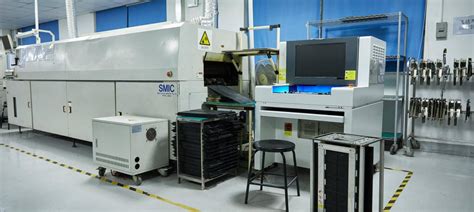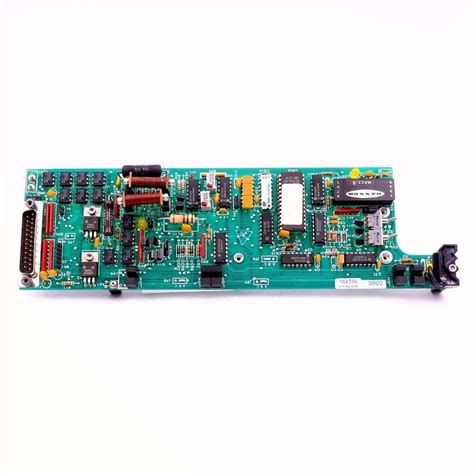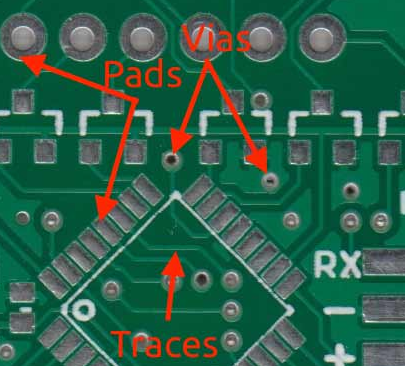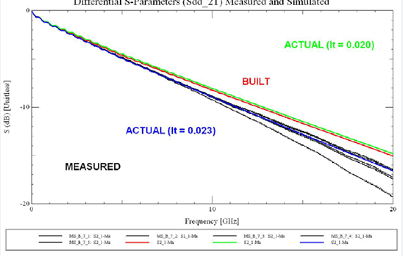Flex pcb with connector
Advantages Of Using Flex PCB With Connector In Modern Electronics
In the rapidly evolving landscape of modern electronics, the integration of flexible printed circuit boards (PCBs) with connectors has emerged as a pivotal advancement, offering a multitude of advantages that cater to the demands of contemporary technological applications.
As electronic devices become increasingly compact and complex, the need for components that can accommodate intricate designs while maintaining reliability and efficiency has never been more critical. Flex PCBs with connectors address these requirements by providing a versatile and robust solution that enhances the performance and functionality of electronic systems.
One of the primary advantages of using flex PCBs with connectors is their inherent flexibility, which allows for the creation of innovative and compact designs.
Unlike traditional rigid PCBs, flex PCBs can be bent, folded, and twisted to fit into unconventional spaces, making them ideal for applications where space is at a premium. This flexibility not only facilitates the miniaturization of devices but also enables the integration of multiple functions within a single unit, thereby reducing the overall footprint of electronic systems. Consequently, manufacturers can design sleeker and more efficient products that meet the ever-growing consumer demand for portability and convenience.
Moreover, the incorporation of connectors into flex PCBs significantly enhances their reliability and ease of assembly.
Connectors provide a secure and stable interface between different components, ensuring consistent electrical performance and reducing the risk of connection failures. This is particularly important in applications where devices are subject to mechanical stress or environmental challenges, such as in automotive or aerospace industries. The use of connectors also simplifies the assembly process, as they allow for easy attachment and detachment of components, facilitating maintenance and repair. This modularity not only extends the lifespan of electronic devices but also contributes to cost savings by minimizing downtime and reducing the need for specialized labor.
In addition to their flexibility and reliability, flex PCBs with connectors offer improved thermal management capabilities.
The materials used in flex PCBs are typically designed to dissipate heat more effectively than those in rigid PCBs, which is crucial in preventing overheating and ensuring the longevity of electronic components. The ability to manage heat efficiently is particularly beneficial in high-performance applications, such as in computing and telecommunications, where devices are required to operate at high speeds and under demanding conditions. By maintaining optimal thermal conditions, flex PCBs with connectors help to enhance the overall performance and durability of electronic systems.
Furthermore, the use of flex PCBs with connectors supports the trend towards increased functionality and connectivity in modern electronics.
As devices become more interconnected, the need for reliable and efficient communication between components becomes paramount. Flex PCBs with connectors facilitate this by providing a seamless and high-speed data transmission pathway, ensuring that information is relayed accurately and promptly. This capability is essential in applications such as the Internet of Things (IoT), where devices must communicate with each other in real-time to deliver a cohesive user experience.
In conclusion, the advantages of using flex PCBs with connectors in modern electronics are manifold, encompassing flexibility, reliability, thermal management, and enhanced connectivity. As technology continues to advance, the demand for components that can support innovative designs and high-performance applications will only increase. Flex PCBs with connectors are well-positioned to meet these challenges, offering a versatile and efficient solution that aligns with the evolving needs of the electronics industry.

Design Considerations For Flex PCB With Connector Integration
When designing a flex PCB with connector integration, several critical considerations must be addressed to ensure optimal performance and reliability. Flex PCBs, known for their ability to bend and conform to various shapes, offer significant advantages in applications where space constraints and mechanical flexibility are paramount. However, integrating connectors into these flexible circuits introduces additional complexities that require careful planning and execution.
To begin with, the choice of materials is a fundamental aspect of flex PCB design.
The substrate material must be flexible yet durable enough to withstand repeated bending and flexing. Polyimide is commonly used due to its excellent thermal stability and mechanical properties. Additionally, the adhesive used to bond the layers of the flex PCB must be selected to ensure it can endure the mechanical stresses imposed by the connector integration. The choice of materials directly impacts the overall performance and longevity of the flex PCB, making it a crucial consideration in the design process.
Moreover, the layout of the flex PCB must be meticulously planned to accommodate the connector.
The placement of the connector should minimize stress on the flex circuit, especially in areas where bending is most likely to occur. It is essential to avoid sharp bends near the connector, as these can lead to mechanical failure over time. Instead, gradual bends should be employed to distribute stress more evenly across the flex PCB. Additionally, the trace routing should be optimized to prevent signal integrity issues, which can arise from excessive bending or twisting of the circuit.
Transitioning to the electrical considerations, the choice of connector type is another critical factor.
The connector must be compatible with the flex PCB’s electrical requirements and mechanical constraints. Factors such as the number of pins, pitch, and current-carrying capacity must be evaluated to ensure the connector can meet the application’s demands. Furthermore, the connector’s mechanical attachment to the flex PCB should be robust enough to withstand the mechanical stresses encountered during operation. This often involves selecting connectors with appropriate locking mechanisms or reinforcement features to prevent accidental disconnection.
In addition to these considerations, thermal management is an important aspect of flex PCB design with connector integration.
The presence of connectors can introduce additional thermal challenges, as they may act as heat sources or sinks. Therefore, it is crucial to assess the thermal performance of the entire assembly, ensuring that heat dissipation is adequately managed to prevent overheating and potential damage to the flex PCB or connector. This may involve incorporating thermal vias, heat sinks, or other cooling solutions into the design.
Finally, manufacturability and assembly processes must be taken into account.
The integration of connectors into flex PCBs can complicate the manufacturing process, requiring specialized equipment and techniques. It is essential to collaborate closely with manufacturers to ensure that the design is feasible and cost-effective to produce. This includes considering factors such as panelization, testing, and quality control measures to ensure that the final product meets the desired specifications and performance criteria.
In conclusion, designing a flex PCB with connector integration involves a comprehensive approach that addresses material selection, mechanical layout, electrical compatibility, thermal management, and manufacturability. By carefully considering these factors, designers can create reliable and efficient flex PCBs that meet the demands of modern electronic applications. Through meticulous planning and collaboration with manufacturing partners, the challenges associated with connector integration can be effectively managed, resulting in a successful and robust design.
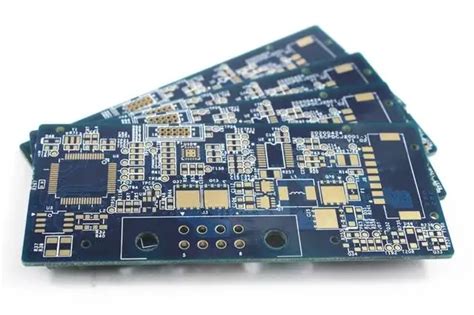
Common Applications Of Flex PCB With Connector In Industry
Flex PCBs with connectors have become an integral component in various industries due to their versatility, durability, and ability to accommodate complex electronic designs. These flexible printed circuit boards, which can bend and twist to fit into compact spaces, are increasingly being utilized in applications where traditional rigid PCBs fall short. The integration of connectors further enhances their functionality, allowing for easy assembly and disassembly, which is crucial in many industrial applications.
One of the most prominent industries leveraging flex PCBs with connectors is the consumer electronics sector.
In this fast-paced industry, the demand for smaller, lighter, and more efficient devices is ever-growing. Flex PCBs are ideal for smartphones, tablets, and wearable technology, where space is at a premium. The connectors facilitate seamless integration with other components, ensuring that devices remain compact without compromising on performance. This adaptability not only aids in the miniaturization of devices but also contributes to their reliability and longevity.
In the automotive industry, flex PCBs with connectors are employed extensively due to their ability to withstand harsh environments.
Modern vehicles are equipped with a multitude of electronic systems, from infotainment and navigation to advanced driver-assistance systems (ADAS). Flex PCBs are used in these applications because they can endure the vibrations and temperature fluctuations typical of automotive environments. The connectors allow for easy maintenance and upgrades, which are essential for the evolving technology landscape in vehicles. This ensures that automotive systems remain up-to-date and functional throughout the vehicle’s lifespan.
The medical field also benefits significantly from the use of flex PCBs with connectors.
Medical devices often require precise and reliable electronic components that can fit into small, intricate designs. Flex PCBs are used in devices such as pacemakers, hearing aids, and diagnostic equipment, where their flexibility and reliability are paramount. The connectors provide a secure and efficient means of connecting various components, which is critical in medical applications where failure is not an option. This integration supports the development of advanced medical technologies that improve patient care and outcomes.
In the aerospace industry, the demand for lightweight and reliable components is critical.
Flex PCBs with connectors are used in a variety of aerospace applications, including satellite systems, avionics, and communication devices. Their ability to reduce weight while maintaining high performance is invaluable in an industry where every gram counts. The connectors ensure that these systems can be easily assembled and maintained, which is crucial for the long-term success of aerospace missions.
Moreover, the industrial automation sector has seen a rise in the use of flex PCBs with connectors.
As factories and production lines become more automated, the need for reliable and adaptable electronic systems grows. Flex PCBs are used in robotic systems, sensors, and control units, where their flexibility allows for innovative design solutions. The connectors facilitate quick and efficient assembly, reducing downtime and increasing productivity.
In conclusion, flex PCBs with connectors are revolutionizing various industries by providing adaptable, reliable, and efficient solutions for complex electronic systems. Their ability to fit into compact spaces, withstand harsh conditions, and facilitate easy assembly makes them indispensable in consumer electronics, automotive, medical, aerospace, and industrial automation applications. As technology continues to advance, the role of flex PCBs with connectors is likely to expand, driving innovation and efficiency across multiple sectors.
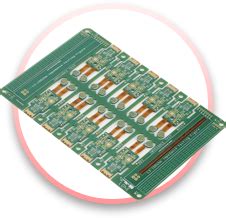
Challenges And Solutions In Manufacturing Flex PCB With Connector
The manufacturing of flexible printed circuit boards (flex PCBs) with connectors presents a unique set of challenges that require innovative solutions to ensure reliability and efficiency. As the demand for compact and versatile electronic devices continues to grow, the integration of flex PCBs with connectors has become increasingly important. However, this integration is not without its difficulties, primarily due to the inherent properties of flexible materials and the precision required in connector attachment.
One of the primary challenges in manufacturing flex PCBs with connectors is maintaining the integrity of the flexible substrate.
Flex PCBs are designed to bend and twist, which can lead to mechanical stress and potential damage during the manufacturing process. This stress is exacerbated when connectors are added, as they introduce additional rigidity and potential stress points. To address this, manufacturers must carefully select materials that balance flexibility with durability. Polyimide films, for example, are commonly used due to their excellent thermal stability and mechanical properties. Additionally, advanced adhesive technologies are employed to ensure that the connectors remain securely attached without compromising the flexibility of the PCB.
Another significant challenge is ensuring precise alignment and attachment of connectors to the flex PCB.
The small size and intricate design of modern electronic devices necessitate a high degree of accuracy in connector placement. Misalignment can lead to poor electrical performance or even complete device failure. To mitigate this risk, manufacturers utilize automated assembly processes that incorporate advanced vision systems and robotic arms. These technologies enable precise placement and soldering of connectors, reducing the likelihood of human error and improving overall production efficiency.
Thermal management also poses a challenge in the manufacturing of flex PCBs with connectors.
The soldering process required to attach connectors can expose the flexible substrate to high temperatures, potentially causing warping or delamination. To combat this, manufacturers employ low-temperature soldering techniques and carefully control the thermal profile during assembly. Additionally, the use of heat-resistant materials and strategic design modifications, such as incorporating thermal reliefs, can help dissipate heat more effectively and protect the integrity of the flex PCB.
Furthermore, the testing and quality assurance of flex PCBs with connectors present their own set of challenges.
Due to the complex nature of these assemblies, traditional testing methods may not be sufficient to identify potential defects. As a solution, manufacturers have developed specialized testing protocols that include both electrical and mechanical testing. These tests are designed to simulate real-world conditions and ensure that the flex PCB and connectors can withstand the stresses they will encounter in actual use. Advanced diagnostic tools, such as X-ray inspection and automated optical inspection, are also employed to detect hidden defects that may not be visible to the naked eye.
In conclusion, while the manufacturing of flex PCBs with connectors presents several challenges, advancements in materials, assembly techniques, and testing methodologies have provided effective solutions.
By addressing issues related to material integrity, alignment precision, thermal management, and quality assurance, manufacturers can produce reliable and efficient flex PCBs with connectors that meet the demands of modern electronic devices. As technology continues to evolve, ongoing research and development will undoubtedly lead to further innovations in this critical area of electronics manufacturing.

